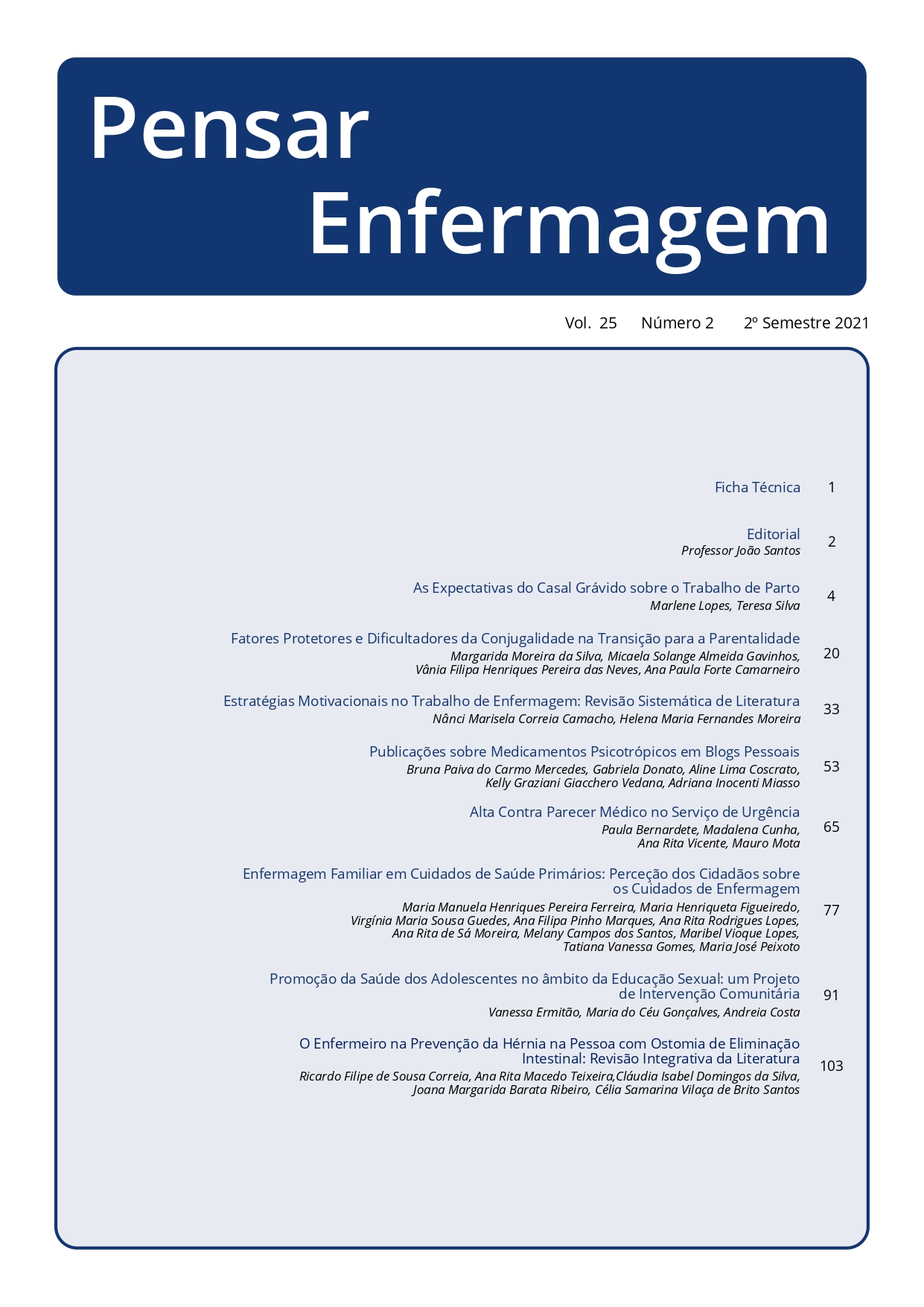Published 2022-04-20
Keywords
- Patient Discharge,
- Emergency Service Hospital,
- Quality Indicators,
- Health Care
How to Cite

This work is licensed under a Creative Commons Attribution 4.0 International License.
Abstract
Introduction: The prevalence of discharge against medical advice from the emergency department is a clinical indicator of quality management and its study is therefore relevant. The aim of this research was to assess the profile of clients leaving the emergency department.
Methods: Quantitative Analysis and retrospective cohort study. All clients who left the emergency department of a central hospital in central Portugal in 2018 were included. The data was collected on the basis of administrative information, with registration on a specific clinical data collection table.
Results: In 2018, 85596 patients came to the emergency service, with a abandonment rate of 3.04% (n=2599). Of the total sample, 1315 patients (50.6%) were male and 1284 (49.4%) female. The average age of customers is 48.21 years old and 46.4% are in the 36-65 age group. The months in which there were the most abandonment records were August (n=11.6%) and February (n=10.4%), and it was during the morning that there were the most abandonment episodes (51.3%). The patients with the clinical priority classified as urgent were those with the highest prevalence of abandonment (39.6%). The clinical priority of non-urgent patients shows 37.9% of abandonments. The majority of patients who left the emergency service after being evaluated by medical screening (78.7%).
Conclusion: The profile of the patients leaving the emergency service is predominantly female, aged 35-65 (with an average age of 48.21), most of whom already have a defined clinical priority and are classified as urgent (yellow). The resolution of this problem should be assumed as a priority by the regulatory authorities, in order to optimize the quality of care and reduce the direct and indirect impact on patients who leave the services.

